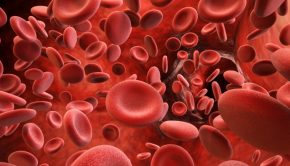Addressing Insulin
Hypertension, Alzheimer’s disease, heart disease, arthritis, diabetes, many cancers, migraine headaches and skin tags are all highly associated with insulin resistance, which most people equate with Type 2 diabetes. This is the most obvious manifestation, but there are many diseases it causes.
Insulin is a very important hormone that enables us to use energy and even to grow. When we eat carbohydrates, especially sugar, insulin production is stimulated. This helps get the glucose into cells to provide energy. In Type 1 diabetes, the pancreas is unable to make insulin, so the cells are unable to metabolize glucose and the body wastes away, a condition called cachexia. With the isolation of insulin by Dr. Frederick Banting and Dr. Charles Best in 1921, the lives of those with Type 1 diabetes was dramatically extended.
When there is too much insulin production on a chronic ongoing basis, the cell becomes less responsive to that stimulus. If someone eats excessive carbohydrates over a prolonged period, they produce enough insulin to get all of those sugars pushed into the cells. The problem is that the cells become less responsive to the insulin and the body requires more of it to get the glucose pushed into the cells. This signals to our body that we have energy to use and energy to store. Unfortunately, one of the ways energy is stored is as fat.
When there is too much visceral fat on the liver, excess fat gets channeled to other organs, including the intestines and the pancreas. One of its activities is producing inflammatory cytokines that create inflammation, a breeding ground for clots to form in the arteries which can lead to heart attack and stroke.
Insulin resistance in the arteries leads to growth of endothelial cells that line the arteries, leading to high blood pressure or hypertension. With insulin resistance in the brain, the neurons become unhealthy and can even decay, leading to Alzheimer’s disease. Excess insulin in in any organ may signal abnormal growth which can lead to cancer. Breast cancer, colon cancer and prostate cancer have all been associated with increased insulin resistance. With insulin resistance in muscles, fat deposits will replace the muscle fibers. A common visible manifestation of this is a sagging arm muscle.
Insulin resistance can be dramatically improved with a combination of good, individualized diet, exercise and hormone optimization. For someone with more advanced metabolic problems, a low-carbohydrate diet combined with intermittent fasting will help burn some of the excess accumulated fat. This will help reduce inflammation and reduce insulin resistance. For someone with an aversion to animal fats and proteins, a natural, whole foods, vegetarian diet can lead to weight loss with reduction of visceral fat and inflammation, improving insulin resistance.
Another good dietary principal is to avoid inflammatory foods. This varies among individuals, but the most common inflammatory foods are dairy, gluten and sugars. We should feel energetic after eating, not blah or fatigued. As a general rule, processed food is more likely to have unhealthy ingredients and stimulate insulin production
Aerobic exercise increases the heart’s output and improves circulation with reduction of blood pressure. Taking a brisk walk after a meal is a great way to improve insulin resistance. Especially after a high-carbohydrate meal, there is an increased insulin load that can lead to insulin resistance. Muscles act as a huge reservoir to enable entry of excess glucose into cells. Strength training increases the size of muscle fibers, which also increases the muscle reservoir to enable carbohydrates’ conversion into energy, rather than fat. A combination of aerobic exercise and resistance training improves cardiac strength, blood flow with reduced blood pressure and increased energy, which helps reduce insulin resistance.
Optimizing hormones is a key foundation to reducing insulin resistance and reducing the risks of many diseases. For men, testosterone helps reduce visceral fat and increases muscle mass, which both help reduce insulin resistance. For women, taking estradiol will also reduce visceral fat and significantly reduce inflammation in the arteries. This is why women lose at least 10 to 15 pounds when taking hormone replacement and the risk of heart disease decreases by more than 50 percent for women that take estradiol. Optimizing thyroid will also improve metabolism such that energy is better spent and fat storage is reduced.
Warren Slaten, M.D., is a pain wellness physician in Ridgewood. For more information, visit HormonesNJ.com.





























